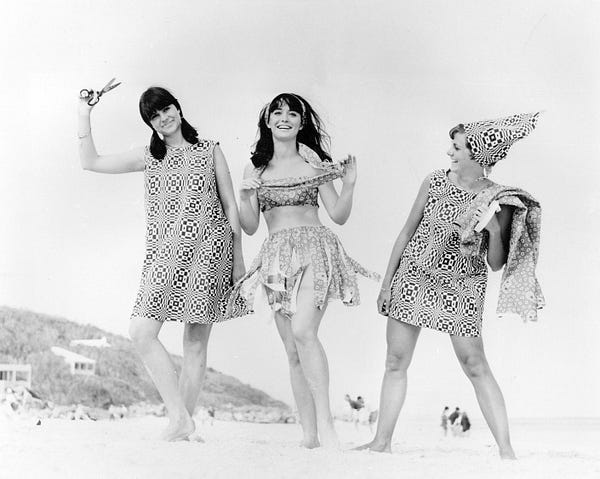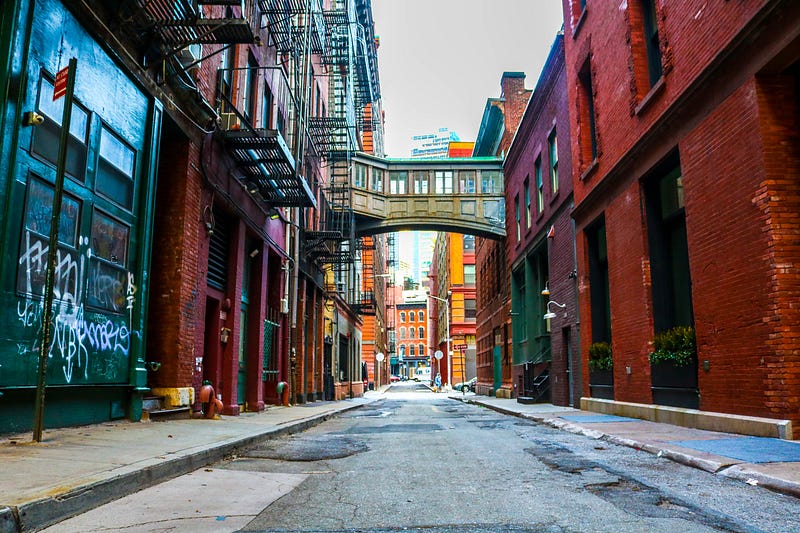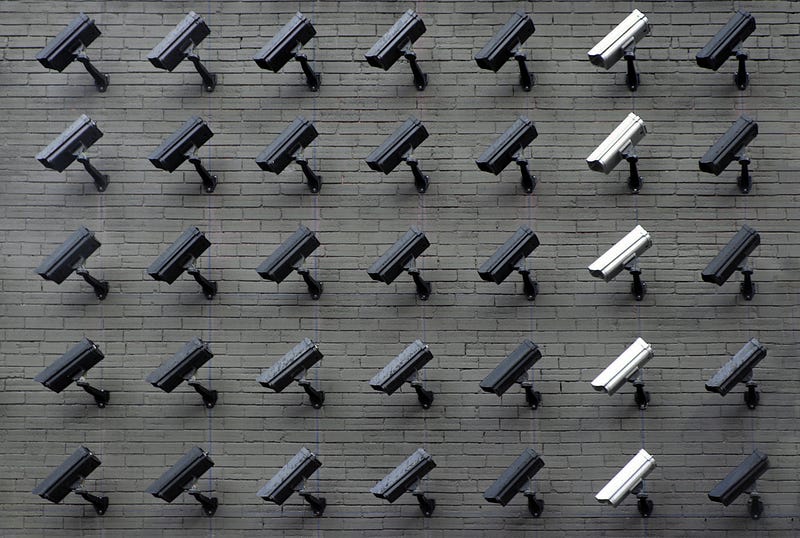📕 Node [[a dispatch from the infected future]]
📄 A-Dispatch-from-the-Infected-Future.md by @enki
A Dispatch from the Infected Future
News from the year 2027
A Dispatch from the Infected Future

Header image by Phoebe Edith
In this text, I tried to extrapolate some of the most pessimistic projections of the COVID-19 pandemic (along with some other trends) by 7 years, and merge it with the familiar style of first-generation cyberpunk writing.
The countermeasures to infection have been rolled out swiftly & mark a substantial departure from the recent norm. Just as nomadic precarious contract work became ubiquitous, we’re seeing exactly that sort of work shut down as a medical risk.
Because those folks have had their social safety net eroded away, even right-wing politicians have been forced to adopt policies that have been among the most far-fetched dreams of radical leftists for decades — basic income, rent jubilees — just as the popular demand for those policies has reached near-revolutionary levels. These responses are supposed to be temporary — but as any engineer or administrator knows, ostensibly-temporary fixes are among the hardest to discard.
Life will change in other, less easy-to-predict ways.
Photo by Amelia Brown on Unsplash
It was 3:14 AM and Tim was out of Pocari Sweat.
He had spent the past four hours practicing triceps — the little ones, with just a hint of shading, and the bigger ones, with big dark deep lines — and while he had managed to avoid cramping in his drawing hand, that kind of abnormal exertion is thirsty work. He liked to use not just his wrist, not just his arm, but even his core muscles when drawing, and when he did speed- sketching, it became an aerobic affair. Electrolytes are important for health, and must be replenished: despite all the precautions, people still got the corona (or something milder). He knew that those bedridden with even milder diseases sometimes died of dehydration and weren’t discovered until somebody sent a drone around to find out why they haven’t deposited their past three monthly UBI checks.

The fashion industry relies upon laborers working physically close together — obviously a danger (even to the upper-class managers). As the labor necessary to mass-produce clothing out of cloth ceases to be logistically viable, we might see a return of paper clothing — especially if people are spending most of their time indoors.
Paper clothing can be produced automatically by machines that aren’t much different from regular printers, & can be recycled in the home. The same processes can be used to make masks, although they may not be up to the same specifications as mass-produced medical masks.
With ingenuity, papercraft clothing and accessories can be made striking or attractive, although they cannot be made particularly durable.
He moved aside the stack of cardboard violins sitting atop the sartomat’s touch panel, selected a new mask and jacket (a leopard-print deal in magenta and lemon, with day-glo whiskers on the mask — custom from a furry artist friend in Singapore), printed them, and left the house.
In a world where people don’t go outside much, public infrastructure will need to be low maintenance. Construction work often cannot be done with a small crew, so it will be done less often. Solar-powered street lights already exist, but will probably become more common.
Photo by Joe Ciciarelli on Unsplash
Although car traffic will become less frequent as people stop commuting to work, repeated freezing and thawing will still create and widen cracks in asphalt, eventually breaking it up entirely. Paved streets will become gravel, as they have in some parts of Cleveland as the result of lack of maintenance.
Lowered emissions from traffic is not enough to keep the world from warming, & so we should expect the trend of increasingly mild winters to continue. Of course, lots of people who would normally have cars for commuting purposes will get rid of them, and these warmer winters will be more comfortable to walk in.
We should expect telepresence control of cars to take the place of ride sharing — but probably along the same general business model as Uber and Lyft. The slightly higher risk from tele-operated vehicles (due to lag & the threat of actual disconnection) will be compensated for by the substantially lower traffic, and even without taking that into account, folks will probably consider it safer than riding in a car with another human being.
Photo by Max Bender on Unsplash
The asphalt on the street was already beginning to revert into gravel, and his steps crunched loudly despite the soft drizzle. The fog made opalescent halos around the streetlights, except those whose solar panels had become obscured by bird’s nests or creeping vines. In the distance, coyotes and foxes howled duets to the autumn moon. He had heard rumors that mountain lions had been sighted again — mostly by home security cameras, but a few by delivery drone or telecab. They didn’t know to be afraid of the street lights or the glowing windows of houses anymore, though he doubted that he would meet any wildlife in his current neon-alien-predator getup.
He liked nights like this. The two block span from his home to the convenience store had become the site of a weekly meditation. In the summer only night-walks were tolerable, but in the winter the nearly constant gentle rains changed their meaning for him and became an excitingly crisp counterpoint to the homeyness of the glow from the windows along the street.
He occasionally saw a stranger or two in the distance, and this too became part of his meditation: featureless silhouettes taking on the feel of mysterious icons in a dream-cathedral. These nameless figures felt as unreal to him as the rest of the outside, and sometimes he almost expected them to teleport, disappear, shapeshift, or take on sudden ominous significance the way dream-figures often do.
When he was a child he had a recurring dream that his grandmother would arrive unexpectedly at his door but when she opened her mouth, waves of static would pour out. In recent years, that dream has transformed: the shadow people in the distance in the perpetual backlit fog of the dim outside sprout mouths like shimmering Os of television static, widening to consume their whole head, letting out smoke that chases him.
None of the silhouettes have ever done this in reality — as far as he can tell — but Tim cannot reliably distinguish the dream-street from the real street, or the dream-fog from the real fog, especially when his sleep has gone accidentally polyphasic again, so he remains vigilant. This, too, is part of his meditation.

[Image from National Geographic](https://www.nationalgeographic.com/photography/proof/2018/february/japan- hikikomori-isolation-society/)
We can learn a lot about how people would act in a world where going out is discouraged by looking at the behaviors of hikkikomori and the technologies that enable them. Vending machines and 24-hour convenience stores are a godsend for the pathologically socially anxious, and a lifesaver in a prolonged pandemic.
Contact with human clerks can be avoided altogether using automation, but many of the tasks that must be performed by convenience store clerks, while they can be performed by robotic arms paired with a skilled operator, cannot be performed by current AI today. We should expect telepresence to bridge this gap, with clerks working from home along the call-center model.
Since a prolonged pandemic gets rid of whole classes of service jobs (waitstaff, much of restaurant kitchen staff, taxi and rideshare drivers), we should expect UBI or something similar to be instated. This will probably lower the number of people willing to work as clerks in convenience stores. However, since those stores will get less frequent traffic, telepresence multiplexing makes sense: have one person administer many stores.
Photo by Glenn Carstens- Peters on Unsplash
On the other hand, we should expect performance-oriented jobs like video game streaming, vlogging, and streaming-video sex work to become much more common, as the difference between doing it as a hobby & doing it as a real job blurs.
Some previously-unnecessary tasks can also be fully automated. For instance, if the portion of the store that customers have access to is kept separate from the portion of the store where stock is kept & food prepared, that section can be automatically sanitized, so long as there are no customers in the store.
The conbini was on the street corner, surrounded by floodlights. Its small parking lot — enough for two or three cars — felt vast in its emptiness. A small unit on the roof projected an advertisement for imported daifuku on the underside of the clouds.
The vending machines were out of toilet paper, so he went inside.

The yawning girl on the monitor was sitting on a toilet, a framed print of Magritte’s The Large Family behind her head, idly manipulating a controller; since none of the waldos in this store were moving, it must be in one of the others. The monitor emitted a beep — end of shift — and the girl was replaced with a teenage boy, engrossed in a physics textbook. Tim couldn’t understand why somebody would choose to have a job. Perhaps the boy was being encouraged by his parents.
With the eraser side of his stylus, Tim pressed the button marked ‘toilet paper’ in curling label-maker tape, then the one with a faded ink-jet-printed Pocari logo wedged under the plastic. Then, in a spurt of whimsy, the one with the masking tape sharpie-scrawled ‘egg salad sandwich’ in shaky block letters.
_The arms behind the perspex in the sealed half of the store that delivered the pocari and TP moved quickly, with a feline grace — clearly automatic. He watched the boy look up from his textbook & hunt for his controller. _Work for your neetbux, counter-revolutionary pig-dog .
He was a little disappointed to see that the kid made his sandwich quickly and efficiently — cracking and removing the shell of the egg with a practiced swirl of two pairs of gripper claws, cross-chopping with another arm whose attachment was a grid of gleaming knives as a fourth arm dumped the egg into the mixing bowl. By the time the blender had squirted its clotted stream of mayonnaise, the boy was already back at his book. The automatic spreading system squished the bread on one side as it tried to flatten the filling with its broad steel spatula.
The deformed sandwich, freshly cellophaned, dropped into the bin with the pocari and the TP, and then all three were cellophaned again before the airlock switched modes and the whole package was dumped out onto the floor. He picked it up and hurried out, hearing the hiss of disinfectant spray and the hum of UV behind him as the door closed, the puddles reflecting the glow through the crooked gaps in the store’s automatic security slats.
Photo by Andrik Langfield on Unsplash
The popular (though controversial) article [Flattening the Curve is a Deadly Delusion](https://medium.com/@joschabach/flattening-the-curve-is-a-deadly- delusion-eea324fe9727) suggests that the social isolation policies necessary to produce an eventual 70% infection rate without overwhelming hospitals would need to extend out for ten years. This would mean there would be teenagers who were too young to remember the concept of a sit-down restaurant, a school, a concert, or a movie theatre.
Smart phones have only existed for 15 years, and most of us have a hard time imagining life without them. After a decade of self-isolation, how many of us would find going out to eat equally unimaginable?
Photo by Lianhao Qu on Unsplash
While he was in the store the rain clouds had gotten their second wind, and he felt the gazes of the outdoor cameras as he squelched home past the cozy nests of all the good, self-isolating people of the city. In another three years, when the meeting ban was lifted, would they leave? How many of them would remember things like movie theaters and restaurants (other than from old movies)?
Meeting with another person had for so long felt gauche — only the rebellious youth did it now, meeting in twos and threes in secret in old underpasses where cameras were never repaired. Anyhow, polyamory is so much easier when you can ghost your way out of problems, and Tim owed his current romantic success largely, he thought, to the fact that none of his partners ever had to be in the same room as him. Once, he went to concerts, danced in mosh pits. He used to spit on the street sometimes, just to punctuate a point. He couldn’t imagine himself doing those things. He couldn’t put himself in the shoes of his younger self. The plague years had changed him in ways that his imagination could not make up for.
Photo by Tirza van Dijk on Unsplash
A society of people living indoors and communicating over video chat will probably take full advantage of the creative possibilities of custom clothing. To the extent that most people perform labor, they will probably do so by performing for each other in exchange for tips, and just as youtubers have embraced elaborate sartorial statements, we should expect the larger amateur entertainment industry produced by lower barriers to entry and lower barriers to profitability to engage in an arms race of creative fashion.
When he got home, he threw his mask and jacket in the pulper, printed a new, daring outfit — one with a lime green tie-dye cape (perhaps it would get him some patrons?) to match his Caligari cardboard guitar and a lemon-yellow fascinator to match the papier-mache wings and sculpted codpiece (a tryptich of lions and sword-wielding cherubs in relief) — and swiped away spam from three cam-enby sites. He stuffed the disappointing sandwich in his mouth and started his livestream.
Follow us on Twitter:
Weird Politics Review
The latest Tweets from Weird Politics Review (@WeirdLeftRising). a Medium
publication devoted to creative and…
twitter.com
By John Ohno on March 20, 2020.
Exported from Medium on September 18, 2020.

Rendering context...






